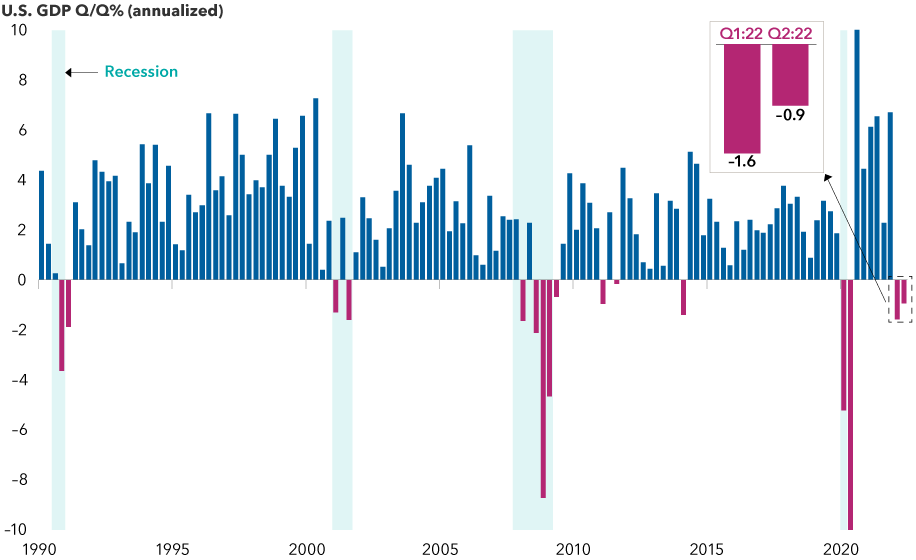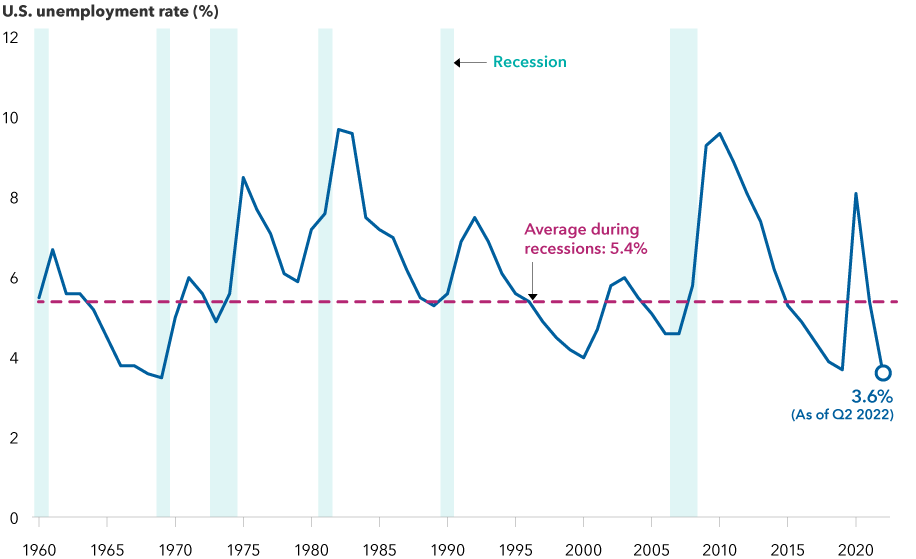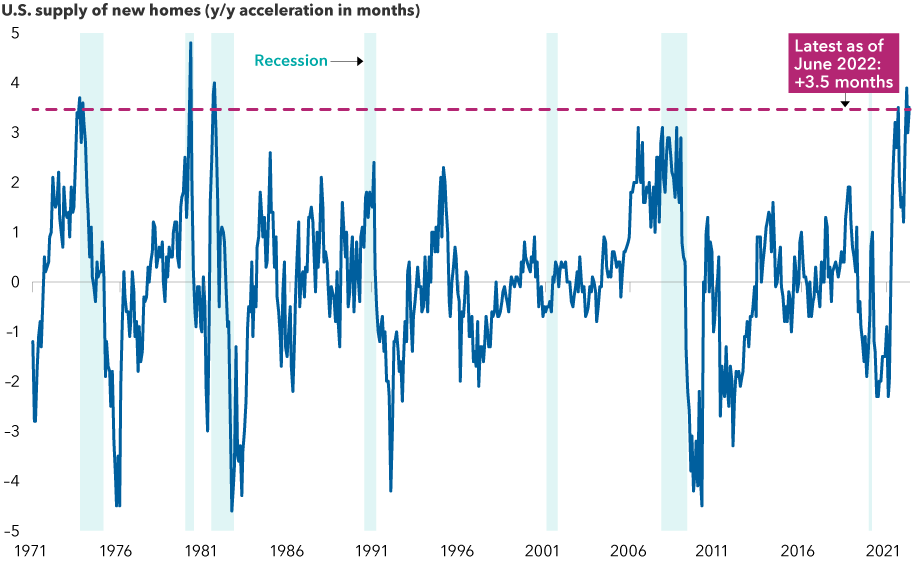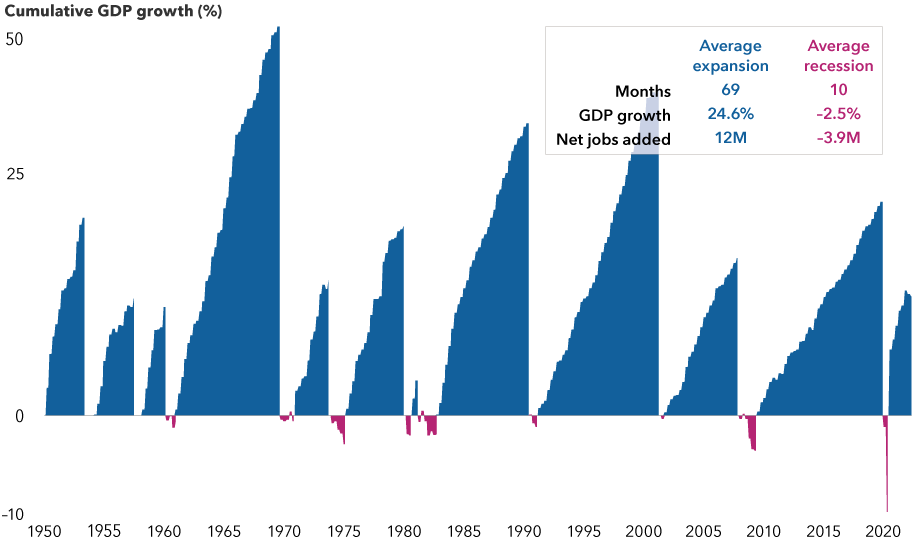Is the U.S. economy in recession or not? That’s the question on the minds of many investors as U.S. gross domestic product (GDP) declined for two consecutive quarters in the first half of the year, a commonly cited definition of recession.
However, with consistently strong job growth, historically low unemployment and solid growth in consumer spending, that doesn’t sound like a recession most people would remember. So what’s the conclusion?
“It depends on who you ask,” says Capital Group economist Jared Franz. “With food, energy and shelter prices all rising faster than wages, the average American consumer would probably say yes. In my view, we are either on the edge of a recession or we are already tipping into it.”
To put things in perspective, over the past 70 years the average U.S. recession has lasted about 10 months and resulted in a GDP decline of 2.5%. In Franz’s estimation, the next one may be worse than average, if current trends persist, but still less severe than the Great Recession from December 2007 to June 2009.









